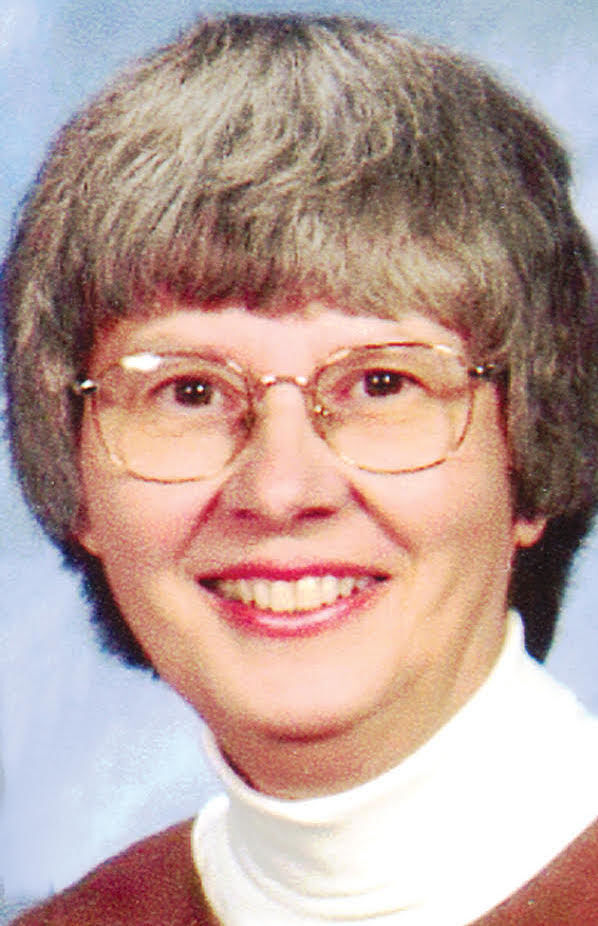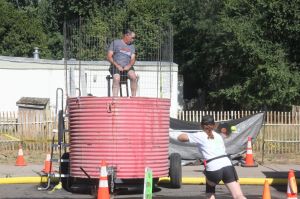Out and about: Paint, hardware and a noodle shop
Published 3:00 am Tuesday, January 11, 2022

- Mammen
After the fire of 1959 that destroyed the Huntington Block, there were still two buildings remaining on the south side of the 1300 block of Adams Avenue in downtown La Grande. The one at 1314 Adams, originally known as the Haworth Building, had been constructed prior to 1893 by Samuel R. Haworth. This was the same S.R. Haworth who was a local contractor and businessman operating a paint store in the Huntington Building in 1893, who constructed the Buzzini Building in 1898 and who had done the stonework for the sugar factory building.
Trending
The attractive two-story Haworth Building was constructed of stone on the street and basement level and brick on the upper level at the cost of $8,000. One of the first occupants was J.C. Henry with his furniture and undertaking business. He remained here until he and J.J. Carr went together to form Henry and Carr and moved to a new location.
The next occupant was Oscar F. Coolidge. Oscar moved to La Grande in 1900 and within the next few years purchased S.R. Haworth’s paint and wallpaper business located in the Huntington Building and moved it into the Haworth Building next door, which he had also purchased. This remained a paint and wallpaper store for the next 30 years. Because of the long association with the Coolidge name, the building took on the name of either Haworth or Coolidge. Oscar Coolidge passed away quite unexpectedly in May 1930.
In 1932 the occupant at 1314 Adams was Safeway Store No. 359, one of the four Safeway stores in La Grande at the time.
Trending
Then from the late 1940s and to the mid ’50s this was the home for Western Auto.
By 1956 Ann Johnson’s store for ladies apparel, a longtime favorite of several generations of La Grande’s women, had moved to this location. Ann had opened her first store in La Grande in 1934 and had moved once before finally moving to 1314 Adams.
The Haworth Building offered something different from most — space for various businesses in the basement. In June of 1919 the Pyramid Land Company had its office here and when it left, Frank Stillwell’s print shop moved in.
Probably the second floor had the most remembered business of the building.
For a number of years it had offices for a variety of occupants. Dr. Richardson was one of these as was Richard McCann, a bookkeeper. And at one time there was also Dr. Mayville, a mechano therapy physician. In 1880 mechano therapy was defined as “the employment of mechanical means for the cure of disease.” But the most remembered occupant of the second floor was Mary’s Noodle Parlor operated by Wong Sing and his wife, Mary.
Wong Sing was truly an entrepreneur, investing in both real estate and restaurants. He had been born in 1867 in San Francisco to parents who had emigrated from China. Although it is unknown when he came to La Grande, it is known that he was working here as an employee at the Boston Lunch in the late teens. Mary, whose Chinese name was Hum, was born in China in 1892 and immigrated in 1918. By 1920 she and Wong were married and working together.
The 1920s had some ugly goings on in La Grande and although the Sings had their share of troubles they persevered. In November of 1920, while Wong was employed at the Boston Lunch, there was a robber who broke in and took $27 and later that same month there was another robbery and over $100 was taken. In 1921 the Boston Lunch was raided by police looking for bootleggers.
The Sings took over the proprietorship of the Boston Lunch in 1922 and changed the name to the Noodle House. Two years later Wong and Mary were charged with possession of narcotics and selling opium, but they were tried and found not guilty.
In 1928 the building owner decided to raze the building housing the Noodle House so Wong moved his business east on Adams to the upper floor of the Coolidge Building, where he and Mary opened Mary’s Noodle Parlor.
Wong was 25 years older than Mary and they found much needed help in Henry Wong Sun, a grandson who had come over from China. Wong Sing died in 1931 leaving Henry and Mary to run the Noodle Parlor. In 1938 they did a complete remodel of the restaurant and were even more popular with the community than ever.
An interesting note about Mary. The 1930 Census stated that she spoke no English, only Chinese. It is unknown when Mary was no longer at the restaurant, but Henry continued running the Noodle Parlor at least until 1955 when he and his family were involved in a fatal automobile crash in which his wife, Kay, was killed. Henry was left with four young children. It is unknown exactly when, but he did move to Portland where in 1960 he married his wife, Louise.
Keep looking up! Enjoy!









